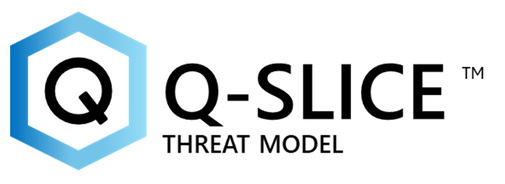Q-SLICETM is designed for use by security architects, risk analysts, and threat modellers to help identify and assess threats in a quantum-capable or a quantum-resilient environment. It has been based on a similar concept to STRIDE where each letter corresponds to a specific class of threat. These categories have been designed to blend classical concerns with quantum-specific challenges now and in the future. Q-Slice can be used alongside STRIDE, PASTA or Mitre ATT&CK as it is designed to be fully interoperable and adds an extra layer of consideration to threat modelling.
While STRIDE is foundational in teaching security design and evaluating threats at a system architecture level, it does not account for:
- Cryptanalytic advances from quantum algorithms (Shor, Grover)
- Legacy crypto exposure (HNDL)
- Hybrid attack surfaces in quantum-classical integrations (TLS, IPsec, QKD, IBM Q, Amazon Braket
"STRIDE lacks abstraction layers necessary to express modern or emerging threats, especially those introduced by hybrid computing models or future cryptanalytic tools." Shostack, 2014
Q-SLICE doesn't replace STRIDE it merely extends it. By combining them, you can ensure that your threat modelling process captures both traditional threats and those introduced by quantum. This dual perspective is essential for organisations planning long-term investments in cryptography and secure system design.
Q-SLICE™ is designed to plug the blind spots in current threat models so the quantum threat is not overlooked or remain unconsidered. The consideration part will take time with organisations focused on AI other new technology and strategy. Quantum is a far out technology for most without the understanding or expertise to consider the harm posed by quantum. It may be that an incident or risk due to a jump in quantum becomes the driver for greater focus. In security it is always better to be proactive as opposed to reactive hence starting to develop an easy to use and workable threat model ahead of time, with the time to mature as well. With Q-SLICE™ its categories reflect:
- Quantum attack vectors (QKD tampering, algorithmic decryption)
- Trust boundary fragility in post-quantum infrastructure
- AI + Quantum convergence risks
- Physical-layer threats unique to quantum coherence
These align with risk areas raised back in 2022 by NIST:
"Quantum computing will undermine current cryptographic assumptions, creating urgent need for security design paradigms that incorporate post-quantum analysis." Chen et al., NIST PQC Round 3 Status Report, 2022




